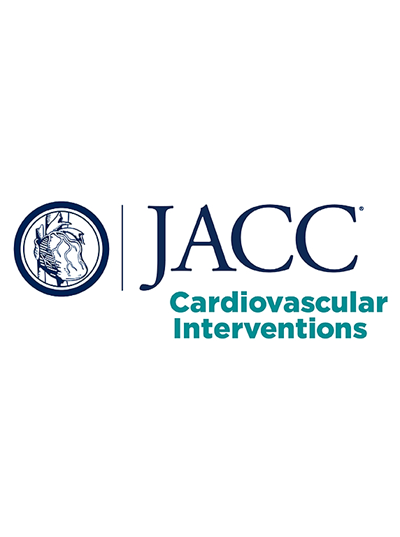Outcomes and Impact of Device Iterations in Mitral Valve Transcatheter Edge-to-Edge Repair
IF 11.7
1区 医学
Q1 CARDIAC & CARDIOVASCULAR SYSTEMS
引用次数: 0
Abstract
Background
The PASCAL P10 system for mitral valve transcatheter edge-to-edge repair has undergone iterations, including introduction of the narrower Ace implant and the Precision delivery system.
Objectives
This study sought to evaluate outcomes and the impact of PASCAL mitral valve transcatheter edge-to-edge repair device iterations.
Methods
The REPAIR (REgistry of PAscal for mltral Regurgitation) study is an investigator-initiated, multicenter registry including consecutive patients with mitral regurgitation (MR) treated from 2019 to 2024. Patients were stratified by device iteration: P10only, P10/AceGen1 (introduction of Ace), and P10/AcePrec (introduction of Precision). The primary endpoint was MR ≤1+ at discharge; secondary endpoints included technical success and MR durability (discharge vs 30 days, 1 year, and 2 years).
Results
A total of 2,165 patients (mean age 78 ± 10 years, 44% female, 85% in NYHA functional class ≥III, EuroSCORE II [European System for Cardiac Operative Risk Evaluation II] 4.9% [Q1-Q3: 3.0% to 8.1%]) were included: 660 P10only, 945 P10/AceGen1, and 560 P10/AcePrec. Median follow-up was 510 days (Q1-Q3: 369-874 days). Primary (47% [n = 1,019 of 2,142]) and secondary (52% [n = 1,123 of 2,142]) MR etiology did not change across device iterations (P = 0.547). Technical success was achieved in 97.0% (n = 2,099 of 2,165) with similar rates across device iterations (P = 0.290). MR ≤1+ was achieved in 72% (n = 1,397 of 2,085), improving with device iterations (P10only: 66% [n = 422 of 638], P10/AceGen1: 73% [n = 661 of 906], P10/AcePrec: 77% [n = 414 of 541]; P < 0.001). MR grades of ≤1+ and ≤2+ slightly worsened at 30 days, 1 year, and 2 years, primarily in patients with primary MR, with no differences across iterations.
Conclusions
Device iterations of the PASCAL system resulted in increasing rates of achieving MR reduction to ≤1+ at discharge, with stable and high technical success rates. A slight deterioration of the initial result warrants further investigation.
二尖瓣经导管边缘到边缘修复中器械迭代的结果和影响:修复研究。
背景:用于二尖瓣经导管边缘到边缘修复的PASCAL P10系统经历了多次迭代,包括引入更窄的Ace植入物和Precision递送系统。目的:本研究旨在评估PASCAL二尖瓣经导管边缘到边缘修复装置迭代的结果和影响。方法:REPAIR研究是一项由研究者发起的多中心注册研究,包括2019年至2024年连续治疗二尖瓣反流(MR)的患者。通过设备迭代对患者进行分层:P10only、P10/AceGen1(引入Ace)和P10/AcePrec(引入Precision)。主要终点为出院时MR≤1+;次要终点包括技术成功和MR耐久性(出院vs 30天,1年和2年)。结果:共纳入2165例患者(平均年龄78±10岁,44%为女性,85%为NYHA功能分级≥III, EuroSCORE II[欧洲心脏手术风险评估系统II] 4.9% [Q1-Q3: 3.0%至8.1%]):660例仅P10, 945例P10/AceGen1, 560例P10/AcePrec。中位随访时间为510天(Q1-Q3: 369-874天)。主要(47% [n = 1,019 / 2,142])和次要(52% [n = 1,123 / 2,142]) MR病因在设备迭代期间没有变化(P = 0.547)。技术成功率为97.0% (n = 2,165中的2,099),设备迭代的成功率相似(P = 0.290)。72% (n = 1,397 / 2085)的MR≤1+,随着设备的迭代而提高(P10: 66% [n = 422 / 638], P10/AceGen1: 73% [n = 661 / 906], P10/AcePrec: 77% [n = 414 / 541];P < 0.001)。≤1+和≤2+的MR分级在30天、1年和2年时略有恶化,主要发生在原发性MR患者中,各迭代间无差异。结论:PASCAL系统的设备迭代使放电时MR降低率提高到≤1+,技术成功率稳定且高。初步结果稍有恶化,值得进一步调查。
本文章由计算机程序翻译,如有差异,请以英文原文为准。
求助全文
约1分钟内获得全文
求助全文
来源期刊

JACC. Cardiovascular interventions
CARDIAC & CARDIOVASCULAR SYSTEMS-
CiteScore
11.60
自引率
8.80%
发文量
756
审稿时长
4-8 weeks
期刊介绍:
JACC: Cardiovascular Interventions is a specialist journal launched by the Journal of the American College of Cardiology (JACC). It covers the entire field of interventional cardiovascular medicine, including cardiac, peripheral, and cerebrovascular interventions. The journal publishes studies that will impact the practice of interventional cardiovascular medicine, including clinical trials, experimental studies, and in-depth discussions by respected experts. To enhance visual understanding, the journal is published both in print and electronically, utilizing the latest technologies.
 求助内容:
求助内容: 应助结果提醒方式:
应助结果提醒方式:


